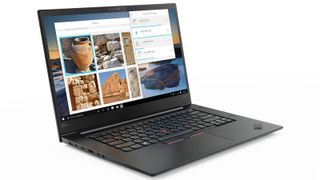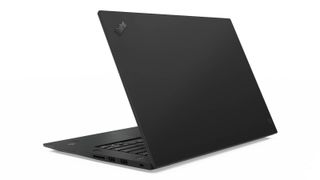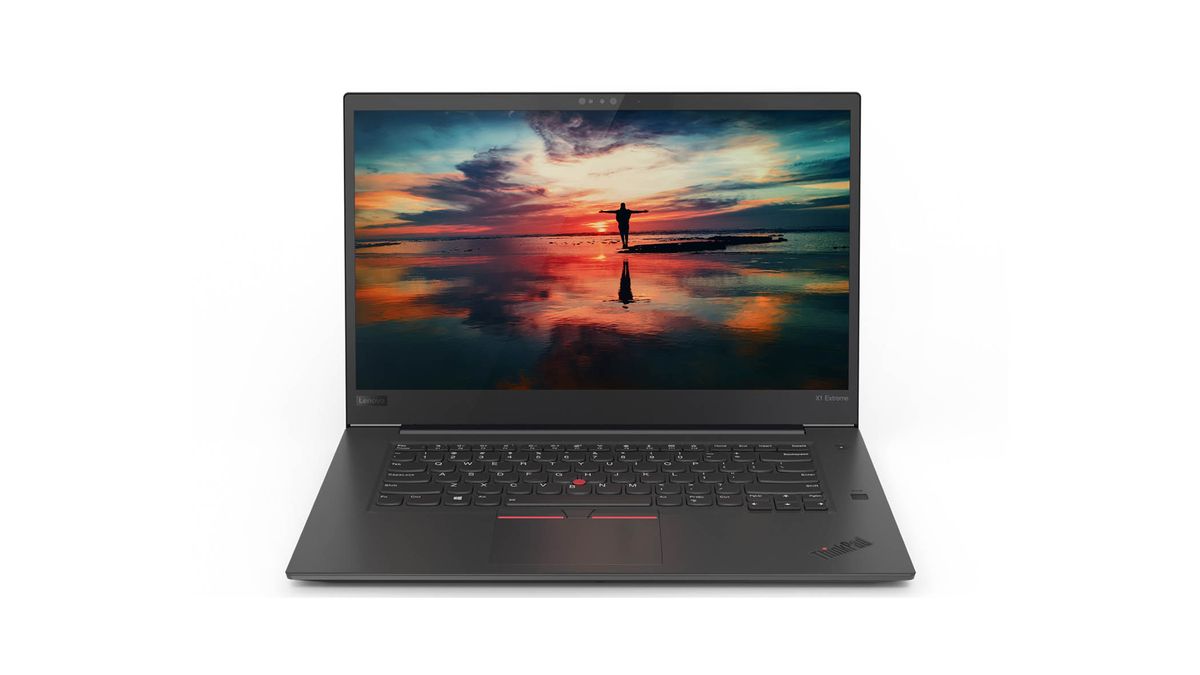TechRadar Verdict
This is one expensive laptop, but many might willingly pay the price for this beautifully engineered and designed machine. If you want desktop-level power with portability in a robust package, the X1 Extreme is built for exactly that.
Pros
- +
So much power
- +
Glorious 4K screen
- +
Great user experience
Cons
- -
Heavy
- -
Expensive
- -
Battery life could be better
Why you can trust TechRadar
When laptop makers put ‘Extreme’ in the name of a product, it’s a strong indicator that this design will be spectacular in at least one or more aspects.
But the Lenovo ThinkPad X1 Extreme pushes the performance boat out on almost every front, combining an 8th-generation Intel Core i7 CPU with an Nvidia Max-Q GPU and wrapping up the gift in a carbon-fiber and aluminum case.
On paper this is the laptop that performance users dream of, but does it live up to the hype and the price?
The X1 Extreme is available in most regions, although the specific models may vary. An entry-level notebook costs $1,673 (£1,619.99), and has a Core i5 CPU, no discrete GPU, 8GB of RAM, 256GB of NVMe storage and a 1080p non-touch display.
The review specification hardware costs $2,834 (£2,679.99 including VAT) but has the full range of hardware goodies as you’ll see in the spec details below.
For US customers, Lenovo even offers an ‘Awesome’ edition which includes the Intel Core i7-8850H six-core processor with vPro (2.60GHz, up to 4.30GHz with Turbo, 9MB Cache) which is pitched above $3,200.
That processor is available in Europe as a customization option, but expect to pay roughly the same number of Euros as dollars to have it.
In short, this isn’t a machine that will be bought by those who are price-sensitive, but there is a substantial amount of high-quality technology crammed into this laptop.

Design
The traditional ThinkPad philosophy is never to offer anything too radical, as the corporate market just doesn’t care for much in the way of style or imagination.
Therefore, the outside of this laptop is remarkably like those that came before, with the same ThinkPad branding and black color scheme.
What we have with the Lenovo ThinkPad X1 Extreme is a design that has been honed, like the evolution of the shark, to a point where most changes are internal rather than major external divergence.
That said, Lenovo must be complimented on the engineering of this notebook’s body, which combines a four-layer carbon-fiber upper surface with an aluminum alloy lower chassis to provide a highly durable shell.
When you consider the abuse that a machine like this might encounter in a working environment, and the high cost of replacing it, being able to take a few knocks is an absolute necessity.
But it also needs to be very practical. And, not unexpectedly in its ThinkPad series, Lenovo nails that part of the equation in the ThinkPad X1 Extreme.
There isn’t any part of this portable which will mystify the average user on the day that they get it.
All the connectors are arranged along the sides, buttons and ports are all clearly labelled, plus the keyboard and touchpad are large and responsive. It’s all good, all tuned for rapid user acceptance, and ready for business.
There are lots of lovely touches and refinements, but for us, the standout visual feature is the wonderful 15.6-inch screen. It’s exceptionally bright, very colorful and remarkably crisp.
Our only complaint about the display, and it’s an easily addressable point, is that at this native resolution and brightness, it is very easy to lose track of the mouse pointer at normal scale.







The only significant downside of this overall design is how heavy it is. At more than 4lbs (1.84kg) this isn’t a system that you’ll want to carry for long, and it isn’t a computer that you can easily pick up with one hand.
That said, even at this weight, this isn’t the heaviest ThinkPad that Lenovo makes, being a few grams less than the T580.
For those who have never owned a ThinkPad, the only warning we give is that against conventional keyboard logic, the Function key is on the far-left of the bottom row, rather than CTRL.
That’s not a huge problem for most users, but it might take some acclimatization for those who use a desktop computer with a conventionally laid out keyboard alongside this notebook.
With a laptop this powerful, the fan can kick in when you start pushing the system, and with the X1 Extreme, this is clearly audible. However, to get the fan spinning at maximum speed requires the GPU to be fully occupied, and the majority of the time this won’t be the case.
The port allocation is excellent with two full Thunderbolt 3 connectors, and the only disappointment is the use of a proprietary power supply port, rather than a Type-C. At least the power connector is a robust effort, and not one of the horrible needle variety that can fall out so easily. Note that the X1 charges from flat in about 2.5 hours.
One oddity is that while the X1 Extreme is thick enough to have a full-sized Ethernet port, instead it has a network extension port and a small adapter to convert to Ethernet.
Our worry would be losing this small adapter, because it isn’t easily replaceable from anywhere else but Lenovo.

We should also mention that on the review model, Windows Hello is fully supported with an IR camera, along with a Match-on-Chip touch fingerprint reader, and a smart card reader (optional) for those who prefer those security protocols.
Here is the Lenovo ThinkPad X1 Extreme configuration sent to TechRadar Pro for review:
CPU: Intel Core i7-8750H 6-core 2.2GHz (Turbo 4.1GHz)
Graphics: GeForce GTX 1050 Ti Max-Q (4GB)
RAM: 32GB DDR4 (2400MHz)
Screen: 15.6-inch 4K HDR IPS multi-touch
Storage: 1TB PCIe NVMe SSD
Ports: 2 x Thunderbolt 3, 2 x USB 3.0 (Type-A), Ethernet extension connector, HDMI 2.0, SD card reader, mic/headphone combo jack
Connectivity: 802.11ac 2x2 Wi-Fi, Bluetooth 5.0
Camera: 720p IR camera
Weight: 1.84kg
Size: 361.8 x 245.7 x 18.7mm (W x D x H)
Battery: 80Whr
Overall, the features of the X1 Extreme are impressive, but incredibly they’re somewhat overshadowed by the specification of the internal hardware.
Specifications
As configurations go, this one is right up there with the most powerful portable computers you can buy.
While Lenovo didn’t push the boat out completely and use the Core i9-8950HK or Xeon E CPU, the Core i7-8750H is a veritable six-core and twelve-threaded silicon beast.
It only requires a single core to trounce the majority of office computing tasks, and might well have allocated the other five to the task of becoming sentient and taking over the world.
This is the perfect hardware to make the most of the NVMe storage and 2400MHz DDR4 RAM, making for very punchy performance almost irrespective of the challenges put before it.
And in the graphics department, where most laptops reach the limits of their capabilities, the X1 Extreme has the Nvidia GeForce GTX 1050 Ti with Max-Q technology and 4GB of dedicated DDR5 memory to rely on.
Mark is an expert on 3D printers, drones and phones. He also covers storage, including SSDs, NAS drives and portable hard drives. He started writing in 1986 and has contributed to MicroMart, PC Format, 3D World, among others.

I've spent 10 years with Apple Watch, and after 10 minutes with the Galaxy Watch Ultra, I can't believe Samsung skipped this feature

This AI scam detector could save you thousands by stopping scammers before they reach you, but it's only free if you're a McAfee customer

Acer Aspire Vero 16 hands on: I tried the world's first oyster shell laptop
